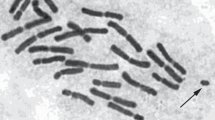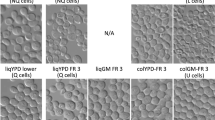Abstract
THE question whether so-called 'pure' strains of yeast are cytologically pure ought to receive the earnest attention of those engaged in the study of the genetics of yeasts. The classification of yeasts is purely arbitrary, and the only reliable method of obtaining any particular species is to get a sample of the original culture. But even if the original culture is available one is not sure that it is cytologically pure, for proportion changes might have occurred in it since isolation. In rapidly growing organisms like the yeasts this is but natural. Investigations on higher plants indicate that polyploids usually mutate to dwarfness as a survival-measure and hence the random size relationships between the diploids and the polyploids offer no morphological criterion for differentiation into types.
Similar content being viewed by others
References
Kater, J. McA, Biol. Bull, 52, 436 (1927).
Winge, Ö., C.R. Lab. Carlsberg, Ser. Physiol., 21, 77 (1935).
Subramaniam, M. K., Proc. Nat. Inst. Sci., in the press; also pp. 49–50 of this issue.
Winge, Ö., and Laustsen, O., C.R. Lab. Carlsberg, Ser. Physiol., 22, 99 (1937).
Author information
Authors and Affiliations
Rights and permissions
About this article
Cite this article
SUBRAMANIAM, M., RANGANATHAN, B. Peculiar Cytological Behaviour of a Distillery Yeast. Nature 157, 50–51 (1946). https://doi.org/10.1038/157050a0
Issue Date:
DOI: https://doi.org/10.1038/157050a0
- Springer Nature Limited
This article is cited by
-
The cytology of yeasts
The Botanical Review (1964)
-
The structure and behavior of fungus nuclei
The Botanical Review (1953)
-
Abnormal mitoses in tetraploid yeasts
Proceedings / Indian Academy of Sciences (1953)
-
Studies on the mutagenic action of chemical and physical agencies on yeasts
Proceedings / Indian Academy of Sciences (1952)
-
Volutin
The Botanical Review (1948)





